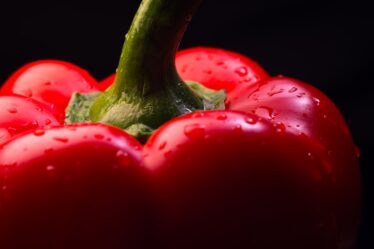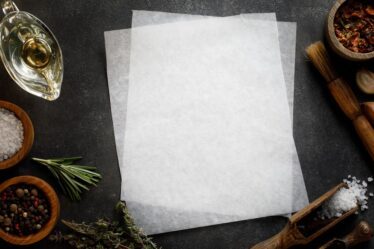
Extract flavors are concentrated liquids that are derived from various sources such as fruits, nuts, and spices. They are commonly used in baking to add depth and complexity to the flavor profile of desserts. Extract flavors are highly concentrated, so a small amount can go a long way in enhancing the taste of baked goods.
One of the main benefits of using extract flavors in baking is that they provide a consistent and intense flavor. Unlike using fresh ingredients like fruits or spices, which can vary in flavor depending on their ripeness or quality, extract flavors offer a reliable and concentrated taste. This makes it easier for bakers to achieve the desired flavor in their recipes.
Additionally, extract flavors have a long shelf life, making them convenient for home bakers. They can be easily stored in the pantry and used whenever needed, without worrying about spoilage or loss of flavor. Extract flavors also allow for greater control over the intensity of the flavor, as they can be added gradually until the desired taste is achieved.
Key Takeaways
- Extract flavors add depth and complexity to baked goods.
- Different types of extract flavors have unique uses and benefits in baking.
- Extract flavors enhance baked goods by activating taste receptors and adding aroma.
- Use extract flavors sparingly and adjust to taste to avoid overpowering your baked goods.
- Experiment with extract flavors in unexpected ways, such as adding vanilla to savory dishes.
Understanding the different types of extract flavors and their uses
There are several common extract flavors that are widely used in baking. Vanilla extract is perhaps the most popular and versatile flavor, known for its sweet and floral notes. It is commonly used in a variety of desserts such as cakes, cookies, and custards. Almond extract has a distinct nutty flavor and is often used in recipes for cookies, pastries, and cakes.
Lemon extract provides a bright and citrusy flavor that pairs well with desserts like lemon bars, pound cakes, and meringues. Other popular extract flavors include peppermint, coconut, and maple. Each of these flavors adds its own unique taste to baked goods and can be used creatively to elevate the overall flavor profile.
The science behind extract flavors and how they enhance baked goods
Extract flavors work by capturing the volatile compounds found in the original source ingredient. These compounds are responsible for the aroma and taste of the ingredient. During the extraction process, these compounds are concentrated into a liquid form, resulting in a highly potent flavor.
When added to baked goods, extract flavors enhance the overall taste and aroma of the dessert. They can help to balance out the sweetness, add depth to the flavor profile, and create a more complex and enjoyable eating experience. Extract flavors also have the ability to evoke nostalgic feelings and memories associated with certain flavors, making them a powerful tool in creating emotional connections through food.
Tips for using extract flavors in your baking recipes
| Tips for using extract flavors in your baking recipes |
|---|
| 1. Start with a small amount of extract and add more as needed. |
| 2. Use high-quality extracts for the best flavor. |
| 3. Consider the intensity of the extract and adjust accordingly. |
| 4. Use extracts in combination with other flavors for a more complex taste. |
| 5. Store extracts in a cool, dark place to maintain their flavor. |
| 6. Experiment with different extracts to find your favorite combinations. |
When using extract flavors in baking, it is important to follow a few dos and don’ts to ensure the best results. Firstly, always start with a small amount of extract flavor and gradually add more if needed. This will prevent overpowering the dessert with too much flavor.
It is also important to use high-quality extract flavors to achieve the best taste. Cheaper extracts may contain artificial ingredients or have a weaker flavor profile. Investing in good quality extracts will ensure that your desserts have a rich and authentic taste.
When measuring extract flavors, use measuring spoons specifically designed for liquids. These spoons are calibrated to accurately measure small amounts of liquid ingredients. Avoid using regular teaspoons or tablespoons, as they may not provide accurate measurements.
Lastly, store your extract flavors properly to maintain their freshness and flavor. Keep them in a cool, dark place away from direct sunlight or heat sources. Avoid storing them near strong-smelling ingredients, as they can absorb odors.
Creative ways to incorporate extract flavors in your desserts
Extract flavors can be used in unique and unexpected ways to add a twist to traditional desserts. For example, adding a touch of almond extract to chocolate chip cookies can give them a subtle nutty flavor that complements the chocolate perfectly. Similarly, adding a hint of coconut extract to vanilla cupcakes can transport you to a tropical paradise.
Extract flavors can also be used to create flavor combinations that are unexpected but delicious. For instance, combining vanilla and lemon extract in a pound cake can result in a refreshing and tangy dessert. Mixing peppermint extract with chocolate can create a festive and minty treat.
How to make your own extract flavors at home

Making your own extract flavors at home is a fun and rewarding process. It allows you to customize the flavor profile and experiment with different combinations. The most common homemade extract flavors are vanilla and almond.
To make homemade vanilla extract, you will need vanilla beans and vodka. Split the vanilla beans lengthwise and place them in a glass jar. Pour vodka over the beans, making sure they are fully submerged. Seal the jar tightly and store it in a cool, dark place for at least 6 weeks, shaking it occasionally. The longer you let it sit, the stronger the flavor will be.
For almond extract, you will need raw almonds and vodka. Toast the almonds in a dry skillet until they are fragrant and golden brown. Let them cool completely before placing them in a glass jar. Pour vodka over the almonds, making sure they are fully covered. Seal the jar tightly and store it in a cool, dark place for at least 4 weeks, shaking it occasionally.
Using extract flavors to make healthier desserts without sacrificing taste
Extract flavors can be a great tool for making healthier desserts without sacrificing taste. By using extract flavors, you can add flavor to your desserts without adding extra calories or sugar.
For example, instead of using sugary syrups or sauces to flavor your desserts, you can use fruit extracts such as raspberry or strawberry to achieve a similar taste without the added sugar. You can also use extracts like cinnamon or nutmeg to add warmth and depth to your desserts without relying on excessive amounts of butter or oil.
Pairing extract flavors with different types of desserts
Certain extract flavors pair particularly well with specific types of desserts. For example, vanilla extract is a classic choice for enhancing the flavor of cakes, cookies, and custards. Its sweet and floral notes complement the buttery and creamy textures of these desserts.
Almond extract pairs well with recipes that feature nuts or fruits. Its nutty flavor adds depth and complexity to desserts like almond cookies, cherry pies, and apple tarts.
Lemon extract is a versatile flavor that can be used in a wide range of desserts. Its bright and citrusy taste pairs well with light and refreshing treats such as lemon bars, lemon meringue pies, and lemon poppy seed muffins.
Popular extract flavors and their unique qualities in baking
There are many popular extract flavors that have unique qualities when used in baking. Here are a few examples:
– Peppermint extract: This extract has a cool and refreshing taste that is perfect for holiday-themed desserts like peppermint bark, candy canes, and chocolate mint cookies.
– Coconut extract: Coconut extract adds a tropical and creamy flavor to desserts like coconut macaroons, piña colada cupcakes, and coconut cream pies.
– Maple extract: Maple extract provides a rich and sweet flavor that is reminiscent of maple syrup. It can be used in recipes for maple pecan bars, maple glazed donuts, and maple walnut cookies.
Elevate your desserts with extract flavors and take your baking to the next level!
In conclusion, extract flavors are a versatile and convenient tool for enhancing the taste of baked goods. They provide consistent and intense flavors, have a long shelf life, and allow for greater control over the taste of desserts. By understanding the different types of extract flavors and their uses, as well as the science behind how they enhance baked goods, you can take your baking to the next level.
Experimenting with extract flavors in your baking recipes can lead to unique and delicious creations. Whether you’re adding a touch of almond extract to your chocolate chip cookies or using coconut extract to transform a vanilla cupcake into a tropical delight, extract flavors offer endless possibilities for elevating your desserts.
So go ahead and explore the world of extract flavors. Let your creativity run wild and see how these concentrated liquids can transform your baked goods into something truly extraordinary. Your taste buds will thank you!
If you’re a baking enthusiast looking to elevate your recipes with unique flavors, you might want to check out this article on unlocking the secrets of champagne grapes. These tiny, flavorful fruits can add a touch of elegance and sophistication to your baked goods. Whether you’re making cakes, cookies, or even bread, incorporating champagne grapes can take your creations to the next level. To learn more about how to use these delightful grapes in your baking, click here: Unlocking the Secrets of Champagne Grapes.



